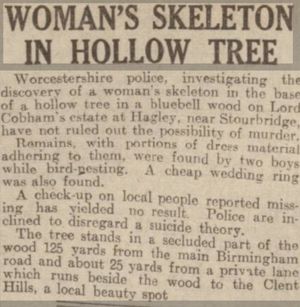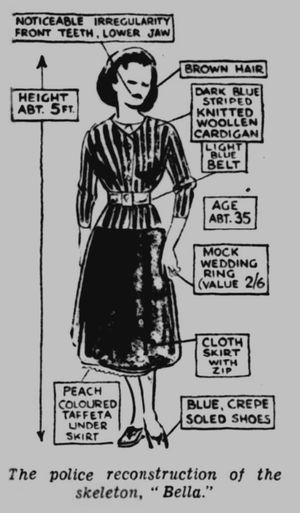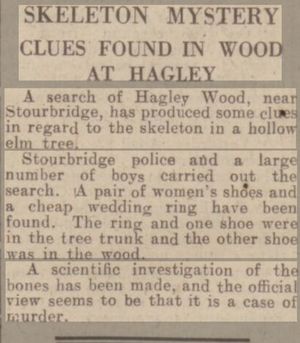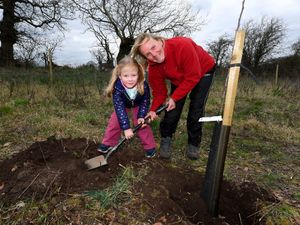Who Put Bella In The Wych-Elm? Unravelling the mystery of murdered woman's skeleton found in tree trunk
A human skull with fragments of old flesh and strands of brown hair stared out at four young boys.

They had made an unbelievably gruesome discovery inside a tree trunk – and the murder mystery that followed has never been resolved.
The four friends Robert Hart, Thomas Willetts, Bob Farmer, and Fred Payne had wandered into Hagley Woods on Lord Cobham's private estate in the hope of poaching bird nests.
It was in the middle of the afternoon of Sunday, April 18 in 1943 when the large Wych Elm tree caught their eye. Robert attempted to climb the bark when he spotted a large hole in the hollow of the tree.
Being curious to know what was inside, Robert peered in and spotted what looked like a skull of some kind.
Using a stick to prise it out, the boys made the horrific discovery. A human skull, with fragments of old flesh and strands of brown hair, staring back at them.

In 1944, graffiti related to the mystery appeared on a wall in Upper Dean Street, Birmingham, reading: "Who put Bella down the Wych Elm – Hagley Wood."
This provided investigators with several new leads for tracing who the victim could have been. Other messages in the same hand appeared too. Since at least the 1970s, similar graffiti has sporadically appeared on the Hagley Obelisk near to where the woman's body was discovered, which asks the slightly modified: "Who put Bella in the Witch Elm?"
The discovery and subsequent graffiti sparked the start of a national news story that has gripped the nation, and the headlines ever since, with just one question: Who put Bella in the Wych Elm?
Many theories have emerged over the years, ranging from espionage to witchcraft. In 1953, an Express & Star reporter received a handwritten letter signed by Anna, who claimed to have known what had happened to Bella and who she was. The Express & Star even promoted a reward of £100 to help catch the culprits.
However, despite all of the leads and extensive efforts by police, the identity of the woman and the circumstances surrounding her death remain a mystery.
Keen historian and self-professed ‘history influencer’ Sarah Haywood, who works as a teaching assistant at Brierley Hill Primary School, has been researching Bella and shared her finds from the British Newspaper Archives with Express & Star readers.
Sarah, a mum-of-two who runs the West Midlands Historic Chronicles - The Black Country and Beyond Facebook group, said: "After finding the skull, a wave of panic set among the boys, how could they tell anyone of their discovery? They had been on the land illegally and the thought of getting in trouble for that plagued them.
"The boys quickly placed the skull back, promising each other never to tell anyone about their findings.
"After returning home, one of the boys mentioned the traumatising finding to his father, who then called and told the authorities of his son's discovery."


From 1941 to 2024: Investigation into murder of Bella remains unsolved
When police arrived they discovered an almost complete skeleton. It had a blue shoe, gold wedding ring, and some fragments of clothing.
Valuable evidence remained intact including tufts of hair and had a clear dental pattern, despite some missing teeth. The remains of a hand were found some distance from the tree.
Birmingham-based Home Office pathologist James Webster quickly established that it was that of a female aged around 35 years old who had been dead for at least 18 months, placing time of death in or before October 1941.
Webster also discovered a section of taffeta in her mouth, suggesting that she had died from suffocation. From the measurement of the trunk in which the body had been discovered, he also deduced that it must have been placed there "still warm" after the killing, as it could not have fit once rigor mortis had taken hold.
They cross-referenced the details they had with reports of missing persons throughout the region, but none of them seemed to match the evidence - and the task was particularly tricky during the Second World War. Despite chasing several new leads over the years a case review by West Mercia Police was closed in 2014.





